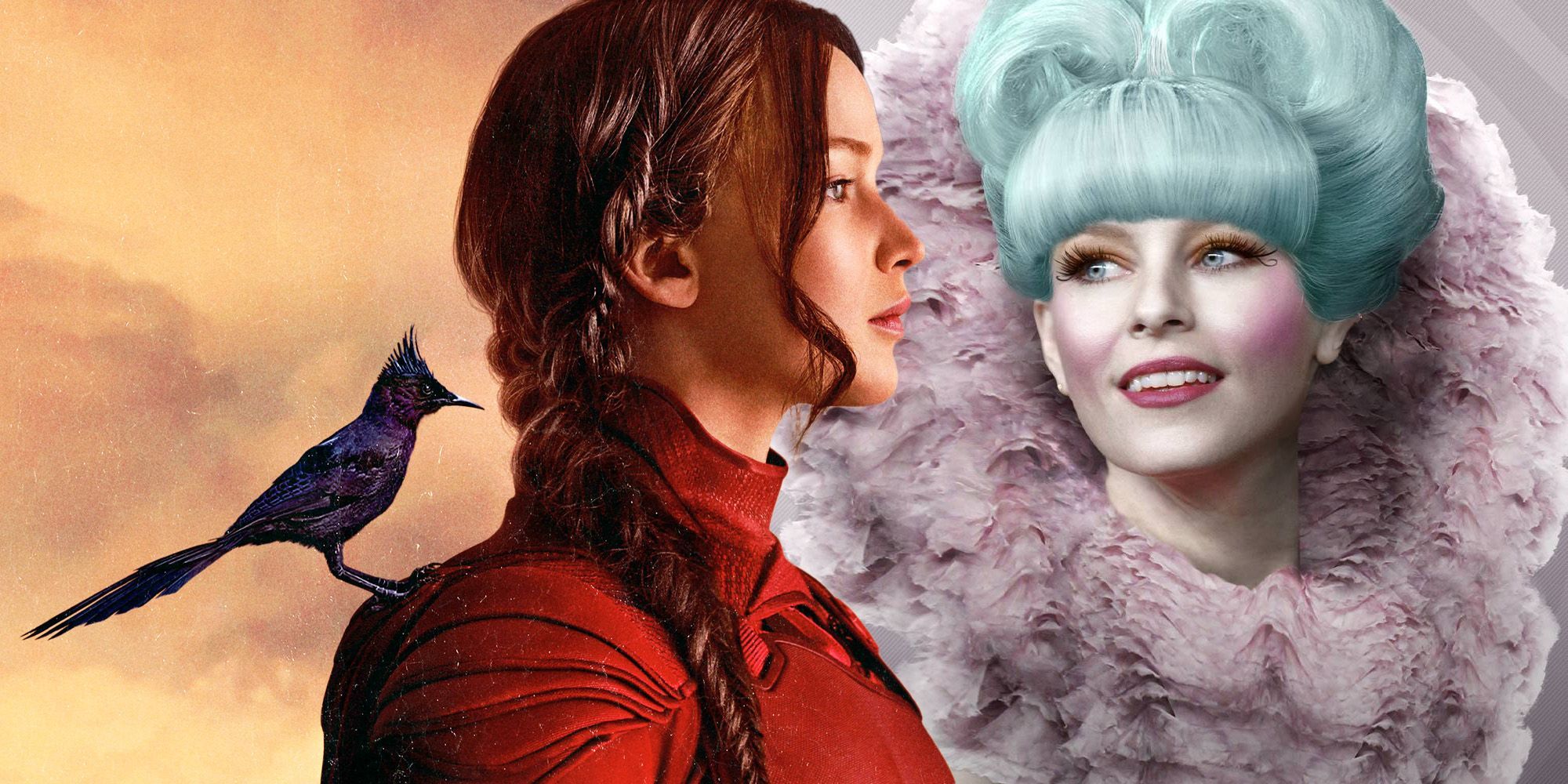
The Hunger Games is a novel written by Suzanne Collins in 2008 that was adapted to film in 2012. The author of the book also served as one of the screenwriters for The Hunger Games as well as Mockingjay Part I. This film franchise was produced during the major rise in popularity of YA novels to film era of the 2010s. There were plenty of significant changes from the original source material to the film that were either cut for pacing issues or creative changes within the first installment of the franchise.
The first major change from book to film is the perspective. In the novel, the story is revealed by Katniss Everdeen describing events from her first-person perspective. Unlike some other YA adaptions that are written in the first-person perspective and choose to have a voice-over in the film, The Hunger Games opts to include some information that Katniss might not be aware of yet or at all to get a more well-rounded story. This means that some of the characters in the movie (like President Snow) are seen more often than they were in the books.
RELATED: Tobey Maguire Was (And Still Is) The Best Spider-Man
There are several character descriptions that were not taken into consideration for the films. Katniss and Gale are both pale and brunette in the film with blue eyes, but in the book, they have olive-toned skin with black hair and gray eyes. And Peeta’s eyes in the book are blue, but in the film, they are brown. Haymitch, played by Woody Harrelson, is fat with brown curly hair; but in the film, he is tall, slender, and has blonde hair. Haymitch is excessively drunk in the book, falling over and vomiting. But in the movie, he is rather clear-headed most of the time.

Peeta gives Katniss bread when she is very young, around age eleven in the book. In the movie, she is the same age as she currently is (sixteen) when it happens. That is how Peeta and Katniss have an established connection. To not starve like she was that day, Katniss now hunts and gathers regularly (which is illegal). Katniss exits District 12 through a hole in the fence. In the book, she has a much more difficult time leaving as the fence is electric. Though it is usually not on, she still listens for the hum of electricity to make sure. She does not do this in the film. Before the Reaping, Gale and Katniss hunt and gather together. But in the movie, Katniss begins the hunt on her own first.
On the day of the Reaping, workers are seen attending their work schedule. In the book, everyone is required to attend the event and not work that day. Viewing the Reaping and the games is mandatory, but Gale suggests in the movie that they have a choice to not participate in viewing. In the movie, Effie says Katniss is the very first volunteer from District 12, but in the book, Katniss says that it has happened before, but not in a very long time. When it's time to leave, Katniss is only given a few minutes to say her goodbyes in the film whereas in the book, she was allowed an hour. Also, Katniss gets her iconic mocking jay pin from a schoolmate named Madge, but she gets it from a black market trader in the film.
Katniss is shown to have more understanding of how the games work in the book, but in the movie she has other characters tell her things, like the importance of sponsors. Haymitch serves as a provider of exposition while Katniss and Peeta are like the audience—needing things to be explained to them. Sponsor gifts don’t come with notes in the book. Instead, Katniss guesses what Haymitch is trying to tell her since he is clearly trying to get her to win.
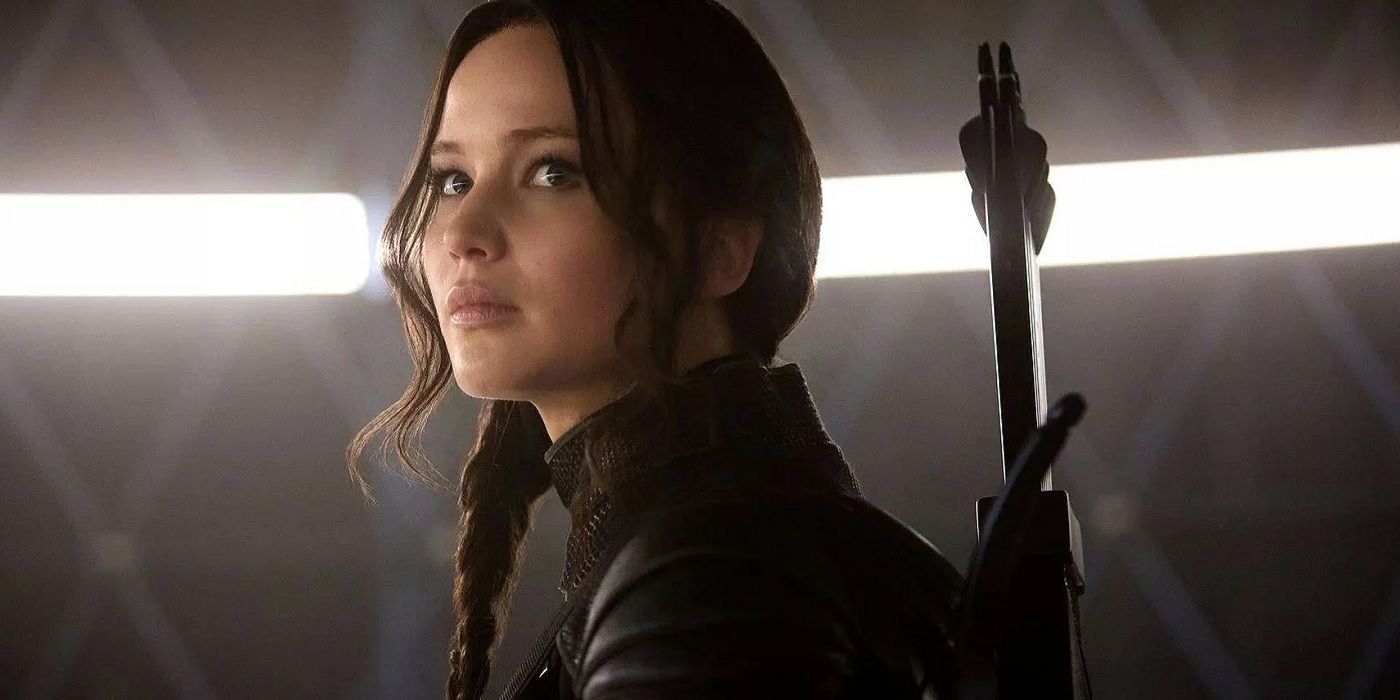
It is Cinna who tells Peeta and Katniss to hold hands during the tribute parade in the books, but in the movie, Peeta is the one to suggest it (something he says the Capital people would love). The book describes the horses pulling the chariots to be all different kinds and colors, but they are all just black in the film. Also, Effie’s name isn't even mentioned in the first film. One of the most entertaining characters in the franchise, Caesar Flickerman, is not a game announcer in the books but is in the movies. And Panem’s flag had no description in the book, but is shown throughout the movie as red with a gold design that resembles a bird of some kind.
In the private session with the gamemakers during which tributes will be given a score, Katniss needs several practice shots with the bow and arrows in the book before she can shoot things accurately. She only shoots twice in the movie. In the book, she shoots all kinds of things including the light fixture, a target dummy, and a punching bag—only to realize that very few gamemakers were even watching. When she shoots the apple, the gamemakers are so shocked that one even falls over into a punch bowl. But, in the movie none of them are watching, and they are only mildly surprised when she shoots towards them. When she leaves in the book, she throws her bow onto the floor; in contrast, the film exit shows Katniss set the bow down after she thanks the gamemakers.
In the movie, career tributes are said to train until they are eighteen. In the book, Suzanne Collins does not mention at what age they stop training and volunteer, but does say how formal training is prohibited within the districts; but Districts 1, 2, and 4 do it anyway. After being scored, the tributes get an interview with Caesar Flickerman in front of a Capital audience. Katniss’s dress during the interview with Caesar Flickerman in the book is covered in gems that catch the light to make it look like she is on fire, but in the movie, it’s a red dress with actual fire effects.
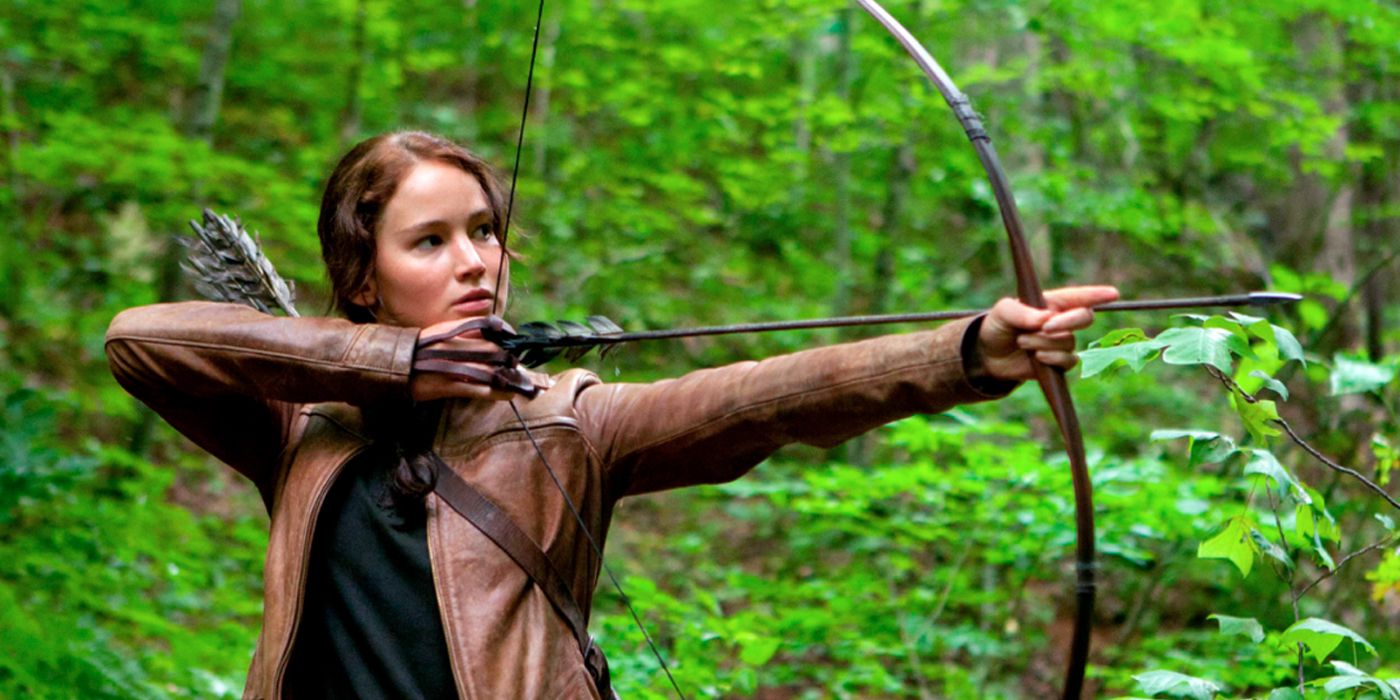
During the first day of The Hunger Games, eleven people die in the book, but thirteen die in the movie. Katniss picks up an orange bag from the Cornucopia, the contents of which are different from book to film. Katniss goes several days without finding water and suffers from dehydration, but in the movie she finds water rather quickly. In the novel, she has to use iodine to purify her water, but does not do so in the film. The gamemakers start a fire in the movie because Katniss is too close to the edge of the arena, but in the book they start it because of the lack of action. The fire causes all the tributes to end up in the same area.
When the group of careers and Peeta are chasing Katniss, she goes up a tree. That night, Peeta stays awake the whole night to protect Katniss, but this is not shown in the film. In the book, Katniss is described as being very small, which is why she can climb higher than the careers chasing her up towards the thin branches. In the movie, she is bigger than in the book, and all of the branches are the same size. Katniss is actually about the same size or even bigger than the other tributes her age or older in the movie.
Katniss gets trapped in the tree and the careers decide to wait her out. Rue tells Katniss to cut a branch with a tracker jacker nest attached to it so it will fall on the careers. In the book, Katniss begins sawing the tree branch with the tracker jackers at night and finishes in the morning. But in the movie, she starts in the morning and finishes quickly. The book describes the fire in more detail (which has affected everyone, even the tracker jackers), and it is the only reason she is able to saw without getting stung too badly since they are still passed out from the smoke.
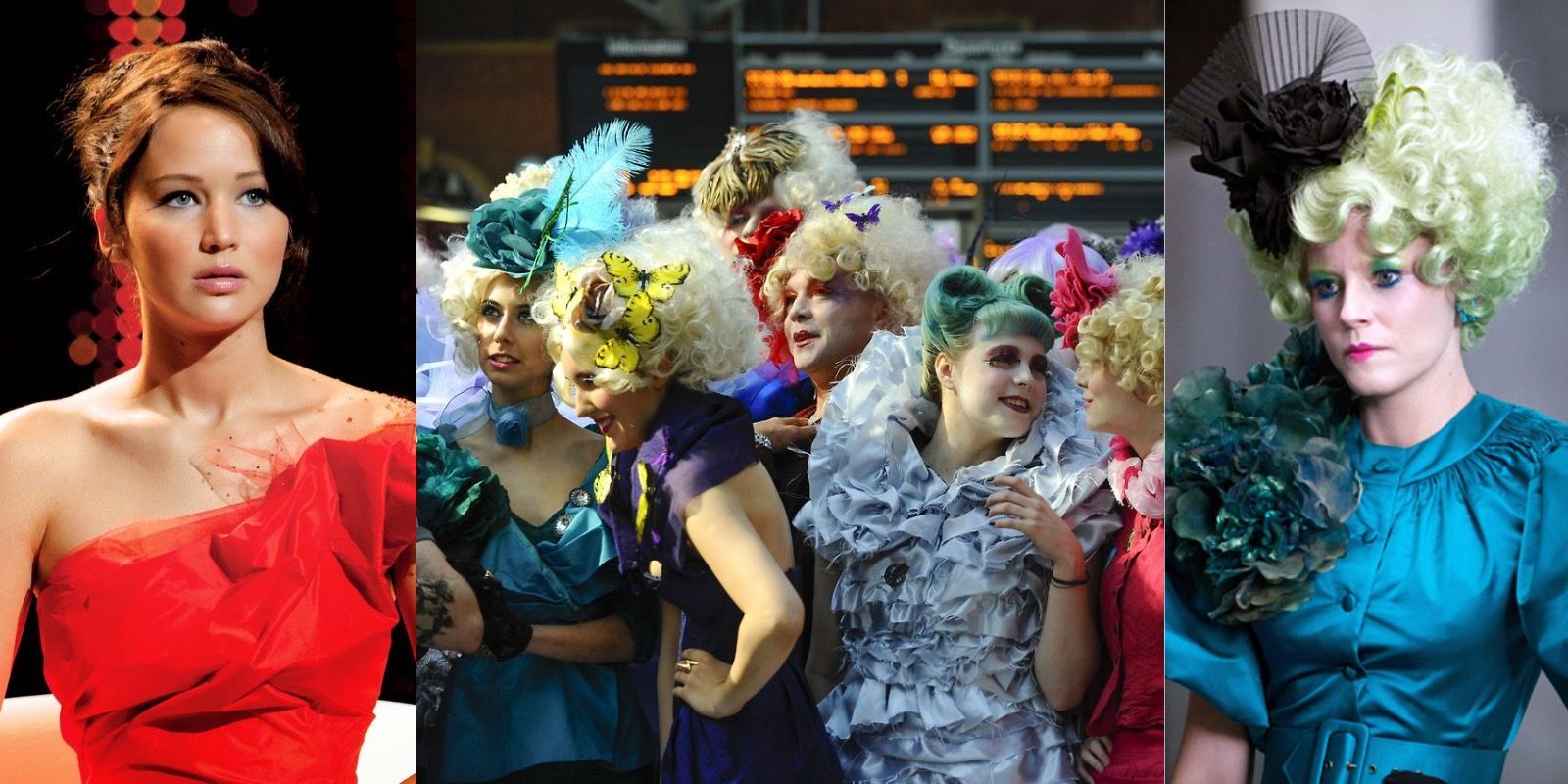
Katniss lost hearing in her left ear when she exploded the supplies in the book. Later, her ear is fixed by the Capital. In the movie, she only has a momentary loss of hearing. She then runs to Rue, whom she hears crying out for help. When Rue dies in the film, Katniss comforts her by saying she will be alright. But Katniss thinks to herself in the book that there is no point in saying this since Rue is not a fool. Katniss also leaves the spear in Rue's body in the books so no one will be able to use the weapon when the gamemakers take away Rue's body. In the movie, Katniss pulls out the spear, and the bodies are never seen being picked up.
This is when Katniss turns to the camera to do a three-finger salute. In the movie, she sees a camera in a tree. In the book, Katniss hasn't seen any cameras, but knows from watching the previous games that there are cameras always watching. So, in the book, she just picks a random direction to stare, hoping that she faced a camera. In the movie, District 11’s riot happens immediately after Rue’s death. This does not happen till Catching Fire in the books. Thresh (from Rue's District) spares Katniss after she tells him how she sang to Rue as she passed, but in the movie, he spares her without this story.
Peeta has a leg infection so bad in the books that he has to have his leg amputated and replaced by a prosthetic. In the movie, this doesn’t happen, as the medicine Katniss retrieves from the Cornucopia is enough to heal him. At the end of the film, the gamemakers release mutts to end the games. In the book, the mutts are said to be terrifying wolf creatures that resemble the fallen tributes. In the movie, they are more or less just dogs. Peeta draws an X on the back of Cato’s hand with blood to tell Katniss to shoot there in the book, but he just taps his hand in the movie.
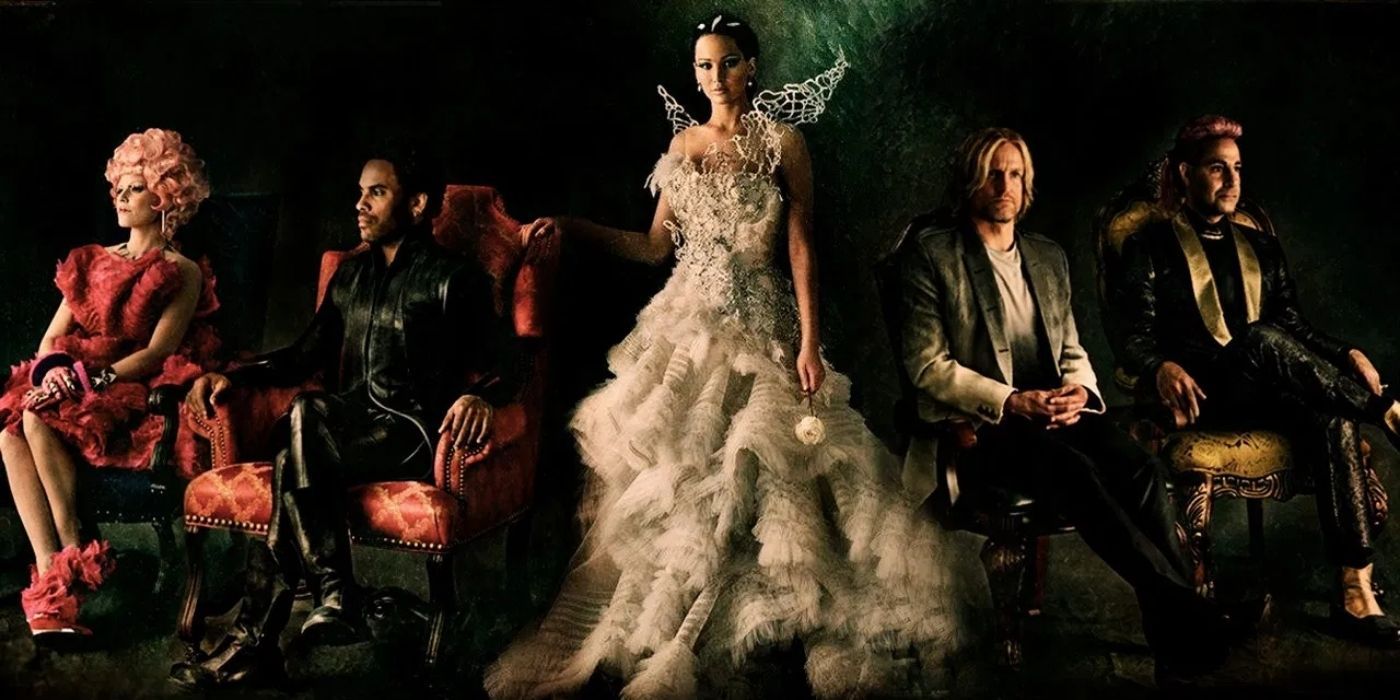
Katniss kisses Peeta as a way to manipulate the audience in the book, but her kisses seem real in the movie. Love was an act in the book, though in the movie, it seems like Katniss really does love Peeta. In the book, Katniss and Peeta put the berries all the way into their mouths before being told to stop. Then they spit them out and wash out their mouths with water. In the movie, they are told to stop before putting the berries in their mouths.
There are several more differences from the book to the film in The Hunger Games. Most of the differences are very small and don't add much. But there are several moments in the movie that are hard to understand with having read the book because Katniss is able to provide more details about unspoken thoughts. The pacing of the movie is much faster and still manages to include the most important moments and plot points.

